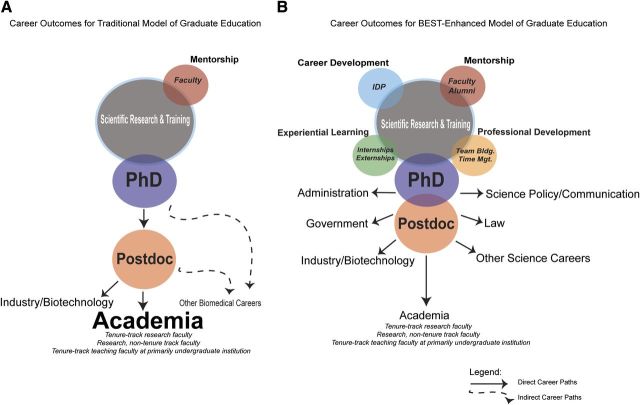Figure 1.
A) The career paths of biomedical trainees under the traditional model of Biomedical Graduate Education. In this linear process of scientific research and training with the direct mentorship from faculty advisors, Ph.D. and postdoctoral trainees perform scientific research and are encouraged toward tenure-track research, research or teaching positions in academia, or to research in industry (solid black arrows). Without formal preparation for other diverse careers, trainees obtained positions in other biomedical careers in an indirect manner with little career-specific training or support (dashed black arrow). B) The approach of BEST programs, where career development initiatives enhance graduate and postdoctoral preparation for a range of careers. Common BEST programmatic themes, such as career development [e.g., Individual Development Plan (IDP)], experiential learning (e.g., internships and externships), professional development (e.g., team building and management), and mentorship (e.g., from faculty and alumni), will directly guide trainees to many career possibilities, such as administration, law, industry/biotechnology, science policy/communication, government, and other science careers, which are viewed as equal, successful, and well-suited career outcomes.

